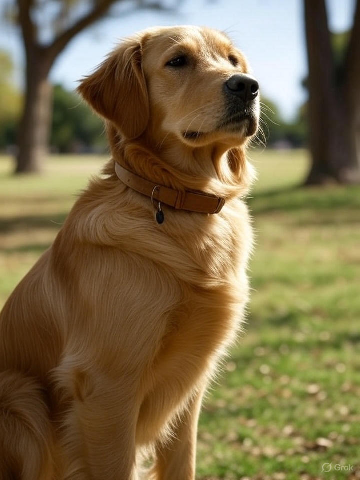Dog in collar is not just a cute sight—it’s a smart and safe way to care for your furry friend. Whether you’re walking your dog, training it, or ensuring its safety, a collar is one of the most essential tools for dog parents. In this easy-to-read guide, we’ll explore everything about dogs in collars—from types, usage, benefits, and training tips to real-life stories and future trends.
Let’s dive into this complete guide on why a dog in collar matters and how you can make the right choice for your pup.
🐾 Why Is a Dog in Collar So Important?
A dog in collar offers more than just style—it ensures safety, control, and identity.
- Safety: Helps prevent your dog from running into traffic or getting lost.
- Control: Useful when training or walking your dog.
- Identification: Collars often carry name tags and contact info.
According to the American Humane Association, over 10 million pets go missing each year. Many could be returned home if they had a collar and ID tag. Source
🦴 Types of Collars for Dogs (With Chart)
There are many types of collars, and each one serves a unique purpose. Here’s a simple chart:
| Type of Collar | Best For | Materials | Special Features |
|---|
| Flat Collar | Everyday use | Nylon, Leather | ID tags, lightweight |
| Martingale Collar | Dogs that pull or escape | Nylon, Fabric | Gentle tightening |
| Head Collar | Strong pullers | Fabric, Nylon | Nose loop, better control |
| Prong Collar | Training large dogs | Metal | Pressure points (use wisely) |
| GPS Collar | Tracking lost pets | Tech-based, nylon | GPS locator |
| LED Collar | Night safety walks | Nylon, Plastic | Lights up in dark |
Make sure to choose a collar based on your dog’s size, behavior, and activity.
🐕 Real-Life Example: How a Collar Saved Bella
Bella, a golden retriever in Austin, Texas, once escaped her backyard during a thunderstorm. Luckily, she had a GPS collar. Her owner tracked her in real-time using the app connected to her collar. Within 20 minutes, Bella was safely back home.
This is just one of many stories where a dog in collar made all the difference.
🧠 How to Train a Dog to Wear a Collar
Training your dog to wear a collar is simple but needs patience.
Step-by-Step:
- Start Early: Begin when the dog is a puppy if possible.
- Use Treats: Reward your dog when it wears the collar.
- Keep It Light: Don’t tighten the collar too much.
- Let Them Adjust: Let your dog wear the collar inside before going out.
- Practice Walks: Slowly introduce walks with the collar and leash.
Tip: If your dog scratches at the collar, distract them with a toy or treat.
🛠️ Practical Uses of a Dog Collar
Besides walking, a collar is useful in many real-life situations:
- Vet Visits: Makes it easier to control the dog.
- Travel: Collars with ID tags can prevent separation issues.
- Social Settings: Control during dog park visits or public areas.
- Training: Some collars help teach commands like sit, stay, or heel.
Pro Tip: Always make sure your dog’s collar fits just right—snug but not tight. You should be able to slip two fingers underneath.
🌍 Future of Dog Collars
Smart technology is changing dog collars too! In the future, we expect collars that can:
- Track heart rate and activity.
- Alert you if your dog is in danger.
- Monitor temperature and behavior.
- Sync with smartphones or home devices.
Brands like Fi Smart Dog Collar and Whistle Health Tracker already offer these features. Learn more at Whistle’s official site.
🏷️ How to Choose the Right Collar
Consider These Key Factors
- Size of your dog – Small dogs need lightweight collars.
- Purpose – Is it for training, walking, or tracking?
- Material – Nylon for everyday, leather for durability.
- Breed traits – Some breeds need more control than others.
Quick Tips
- Don’t leave choke or prong collars on unattended dogs.
- Replace old or worn collars regularly.
- Reflective collars help during nighttime.

❓FAQs About Dog in Collar
Q1. Can a collar harm my dog’s neck?
Answer: Only if it’s too tight or misused. Always check the fit and avoid choke collars for small breeds.
Q2. How tight should the collar be?
Answer: You should be able to slide two fingers under the collar comfortably.
Q3. Is a harness better than a collar?
Answer: Harnesses are great for dogs that pull a lot or have breathing issues. But collars are better for ID tags and quick control.
Q4. Can puppies wear collars?
Answer: Yes, but they should be lightweight and adjustable as they grow quickly.
Q5. How often should I check the collar?
Answer: Weekly is best. Check for wear and tear, and make sure it still fits.
🌟 Final Thoughts
Seeing a dog in collar is not just adorable—it shows responsibility, care, and love. From safety to training, collars play a huge role in your dog’s life. Whether you’re choosing a classic leather collar or a modern GPS one, the goal is the same: keeping your dog safe and happy.
Collars have come a long way, and with technology improving, the future is full of exciting features. Remember, your dog depends on you. So take time to pick the right collar and train them with love.
🐶 Want to Explore More?
- Learn about different dog harnesses: AKC Dog Harness Types
- Read more on dog safety tips: ASPCA Pet Safety

